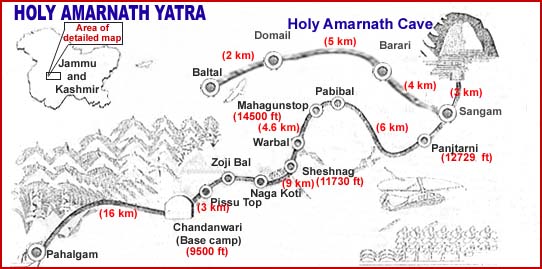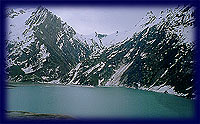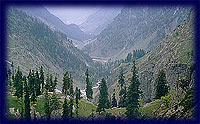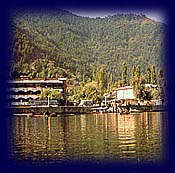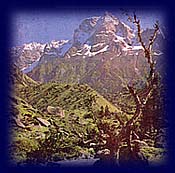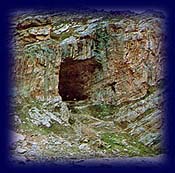Most of india's finest beaches are in kerala. For virtually its entire 900 km length, the kerala coast is lined with sandy beaches, rocky promontories and coconut palms. The palm-lined beaches of kerala are renowned for the gentle surf and azure blue waters. To this add a delectable seafood cuisine, a smiling sun and frendly people to make an unforgetable holiday. Each year greater numbers of visitors arrive here in search of the tranquil, palm fringed beaches.
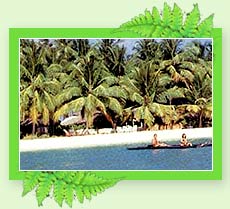 Alappuzha Beach :
Alappuzha Beach :

Alappuzha beach is quite a popular tourist spot, known to provide relaxation in the district of Alappuzha (Alleppey). The pier, which extends into the sea here, is around 140 years old. Blessed with nature's green beauties such as lagoons, vast lakes and numerous fresh water rivers, Alappuzha is a natural wonderland of Kerala state.
The Alappuzha (Alleppey) beach is spectacular. At one end are the dense palm groves that are so characteristic of Kerala's landscape. It has a long sandy beach. For the entertainment of visitors there is a Vijaya Beach Park and an old lighthouse nearby.
Entertainment facilities at the Vijaya beach park add to the attractions of the beach. The Vijaya beach park consist of picnic spot with children's park & boating facilities.
Bekal Beach :

Bekal fort stands on a promontory between two long classically beautiful palm fringed beaches. This is the largest, best preserved fort in kerala.
 Alappuzha Beach :
Alappuzha Beach :Alappuzha beach is quite a popular tourist spot, known to provide relaxation in the district of Alappuzha (Alleppey). The pier, which extends into the sea here, is around 140 years old. Blessed with nature's green beauties such as lagoons, vast lakes and numerous fresh water rivers, Alappuzha is a natural wonderland of Kerala state.
The Alappuzha (Alleppey) beach is spectacular. At one end are the dense palm groves that are so characteristic of Kerala's landscape. It has a long sandy beach. For the entertainment of visitors there is a Vijaya Beach Park and an old lighthouse nearby.
Entertainment facilities at the Vijaya beach park add to the attractions of the beach. The Vijaya beach park consist of picnic spot with children's park & boating facilities.
Bekal Beach :
Bekal fort stands on a promontory between two long classically beautiful palm fringed beaches. This is the largest, best preserved fort in kerala.
Beypore Beach :

10 km south of Kozhikode, located at the mouth of chliyar river, beypore, one of the prominent ports and fishing harbours of ancient kerala was an important trade and maritime centre. Ancient beypore was much sought after by merchants from western asia, for its ship building industry. The boat building yard here is famous for the construction of the uru, the traditional arabian trading vessel
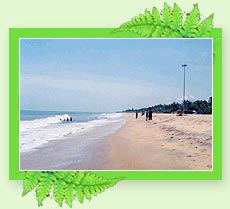 Cherai Beach :
Cherai Beach :

45 kms from ernakulam city, this lovely beach bordering vypeen island is ideal for swimming. Dolphins are occasionally seen here. A typical kerala village with paddy fields and coconut groves nearby is an added attraction.
Dharmadam Island :

The small 5 adre island covered with coconut palms and dense bushes is a beautiful sight from the beach. Permission is required to enter this privately owned island.
Ezhimala Beach :

The beautiful beach here has a hillock nearby (286 m high). Carved stone pillars and an ancient burial chamber can be seen at the foot of the hills. The hills are noted for rare medicinal herbs. A naval academy is being developed here. Permission is required for entry.
Fort Kochi Beach :

12 kms from ernakulam city, a leisurely walk through the lanes of the city is the best way to discover historic fort kochi. An obscure fishing village that became the first european township in india, kochi has an eventful and colourful history. The town was shaped by the portuguese, the dutch and later the british. The result of these cultural interfaces are seen in the remains of the indo european architecture here.
10 km south of Kozhikode, located at the mouth of chliyar river, beypore, one of the prominent ports and fishing harbours of ancient kerala was an important trade and maritime centre. Ancient beypore was much sought after by merchants from western asia, for its ship building industry. The boat building yard here is famous for the construction of the uru, the traditional arabian trading vessel
 Cherai Beach :
Cherai Beach :45 kms from ernakulam city, this lovely beach bordering vypeen island is ideal for swimming. Dolphins are occasionally seen here. A typical kerala village with paddy fields and coconut groves nearby is an added attraction.
Dharmadam Island :
The small 5 adre island covered with coconut palms and dense bushes is a beautiful sight from the beach. Permission is required to enter this privately owned island.
Ezhimala Beach :
The beautiful beach here has a hillock nearby (286 m high). Carved stone pillars and an ancient burial chamber can be seen at the foot of the hills. The hills are noted for rare medicinal herbs. A naval academy is being developed here. Permission is required for entry.
Fort Kochi Beach :
12 kms from ernakulam city, a leisurely walk through the lanes of the city is the best way to discover historic fort kochi. An obscure fishing village that became the first european township in india, kochi has an eventful and colourful history. The town was shaped by the portuguese, the dutch and later the british. The result of these cultural interfaces are seen in the remains of the indo european architecture here.
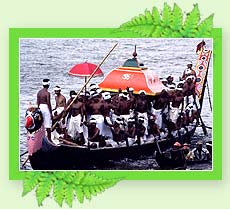 Kerala Backwaters :
Kerala Backwaters :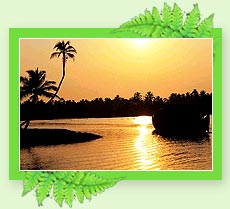
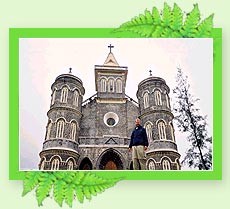
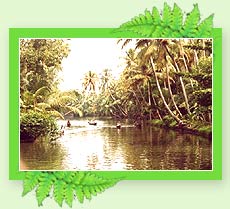
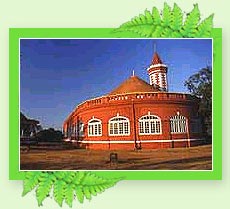 Museum complex - Art and natural history museums, art gallery and zoological and botanical gardens are located in a plot in the heart of the city. The museum contains paintings and other collections of the royal family.
Museum complex - Art and natural history museums, art gallery and zoological and botanical gardens are located in a plot in the heart of the city. The museum contains paintings and other collections of the royal family.
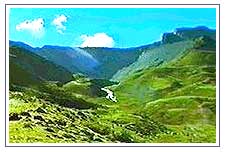 Assam possibly has more folklore and tradition than any other place in India. There are archaeological ruins all over Assam but the ones around Sibsagar simply must be seen. The largest river island of the world, Manjuli, is a must too along with Kaziranga wildlife sanctuary. Crossing the magnificent Brahmaputra so deeply linked to life in Assam, one reaches Guwahati, the capital where the famous Kamakahya temple is located on a hilltop. Guwahati has evolved into a major business centre and most of the travel linkages pass through it.
Assam possibly has more folklore and tradition than any other place in India. There are archaeological ruins all over Assam but the ones around Sibsagar simply must be seen. The largest river island of the world, Manjuli, is a must too along with Kaziranga wildlife sanctuary. Crossing the magnificent Brahmaputra so deeply linked to life in Assam, one reaches Guwahati, the capital where the famous Kamakahya temple is located on a hilltop. Guwahati has evolved into a major business centre and most of the travel linkages pass through it.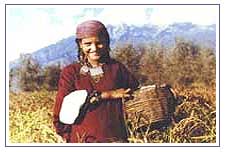 Inhabited by swarthy tribes, Nagaland has its own distinct culture and ethos. Happy and cheerful, the people have an innate sense of music and colour. All the land here is basically owned by villages and individuals and this is true of many areas of the North-East and, therefore, one rarely hears of land disputes and clashes.
Inhabited by swarthy tribes, Nagaland has its own distinct culture and ethos. Happy and cheerful, the people have an innate sense of music and colour. All the land here is basically owned by villages and individuals and this is true of many areas of the North-East and, therefore, one rarely hears of land disputes and clashes.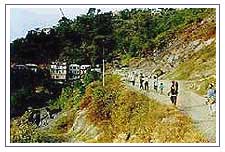 Tripura is steeped in history with linkages established from the legendary Limar dynasty. Recorded history dates back to almost 3,000 years. Even Samudra Gupta’s pillars mention the existence of this state. This is yet another state like Manipur where Christian influence is negligible. It is the unique continuous history that has to be absorbed here. In geographical terms, Tripura is a small state and the second smallest state of India.
Tripura is steeped in history with linkages established from the legendary Limar dynasty. Recorded history dates back to almost 3,000 years. Even Samudra Gupta’s pillars mention the existence of this state. This is yet another state like Manipur where Christian influence is negligible. It is the unique continuous history that has to be absorbed here. In geographical terms, Tripura is a small state and the second smallest state of India.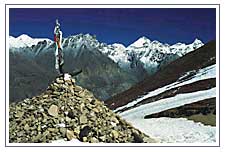 Mount Kailash, which is believed to have been formed 30 million years ago when Himalayas were in their early stage of formation, is one of the most revered places in the Himalayas.
Mount Kailash, which is believed to have been formed 30 million years ago when Himalayas were in their early stage of formation, is one of the most revered places in the Himalayas.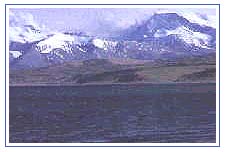
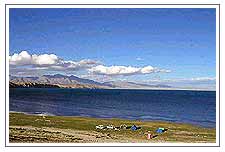 The circumference of Mansarovar is 88-km, its depth is 90m and total area is 320-sq-kms. The lake freezes in the winters and melts only in spring. It looks unbelievably fascinating on moonlit nights when an ethereal ambience pervades the atmosphere. The circumference of Rakshas Tal, also known as “Ravan Kund”, is 122-km. A 6-km long natural channel - “Gangachhu” - connects Manas with Rakshas Tal.
The circumference of Mansarovar is 88-km, its depth is 90m and total area is 320-sq-kms. The lake freezes in the winters and melts only in spring. It looks unbelievably fascinating on moonlit nights when an ethereal ambience pervades the atmosphere. The circumference of Rakshas Tal, also known as “Ravan Kund”, is 122-km. A 6-km long natural channel - “Gangachhu” - connects Manas with Rakshas Tal.